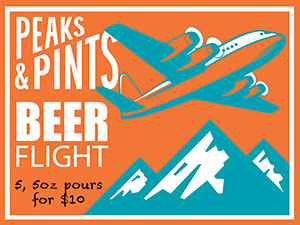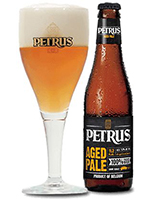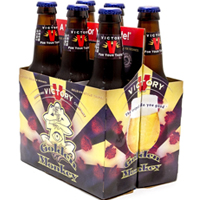 According to the Brewer’s Association, pale ales are the second most popular style of craft beer, trailing only IPAs. Pale ales originated in the UK in the late 1700s and were made famous by the Bass Brewery of Burton-upon-Trent, England. Sierra Nevada then “Americanized” the style in 1980 when they released their hoppier version of the pale ale featuring Cascade hops, which became the signature hop for the American version of style. English pale ales often have less assertive hoppiness that comes off more herbal and grassy. The Belgian pale ale was brewed in one form or another all the way back in the mid-1700s brewing with pale malts and noble hops but the yeast remained all Belgian, creating a light colored ale with, a low hop profile, notes of pear and orange esters, and spicy phenols. Though strong Belgian pale ales have existed for centuries, the “tripel” name wasn’t used until the Trappist monks at Westmalle Abbey changed the name of what they’d called Superbier, their heaviest pale ale, in 1956. Light in color, well balanced in terms of malts and hops, and usually made from Belgian yeast strains, some tripels are considered among the best beers in the world. So, you see pale ales take up some serious real estate in the beer world. You’ll probably encounter them pretty quickly in your foray into beer, and as we noted the style isn’t as simple as it may seem (for instance, not all pale ales are actually very pale). Peaks and Pints presents a flight of pale ales that we call Craft Beer Crosscut 8.29.17: A Flight of Pale Ale Styles.
According to the Brewer’s Association, pale ales are the second most popular style of craft beer, trailing only IPAs. Pale ales originated in the UK in the late 1700s and were made famous by the Bass Brewery of Burton-upon-Trent, England. Sierra Nevada then “Americanized” the style in 1980 when they released their hoppier version of the pale ale featuring Cascade hops, which became the signature hop for the American version of style. English pale ales often have less assertive hoppiness that comes off more herbal and grassy. The Belgian pale ale was brewed in one form or another all the way back in the mid-1700s brewing with pale malts and noble hops but the yeast remained all Belgian, creating a light colored ale with, a low hop profile, notes of pear and orange esters, and spicy phenols. Though strong Belgian pale ales have existed for centuries, the “tripel” name wasn’t used until the Trappist monks at Westmalle Abbey changed the name of what they’d called Superbier, their heaviest pale ale, in 1956. Light in color, well balanced in terms of malts and hops, and usually made from Belgian yeast strains, some tripels are considered among the best beers in the world. So, you see pale ales take up some serious real estate in the beer world. You’ll probably encounter them pretty quickly in your foray into beer, and as we noted the style isn’t as simple as it may seem (for instance, not all pale ales are actually very pale). Peaks and Pints presents a flight of pale ales that we call Craft Beer Crosscut 8.29.17: A Flight of Pale Ale Styles.
 Brouwerij De Brabandere Petrus Aged Pale
Brouwerij De Brabandere Petrus Aged Pale
7.3% ABV, 3 IBU
Petrus Aged Pale was never intended for the public. It was merely a blending beer, stored in 220 hectoliter oak foeders, used for Brouwerij De Brabandere’s Oud Bruin to give it a slightly sour flavor. It wasn’t until world-renowned beer expert Michael Jackson (no, not he who moonwalked) stopped by the brewery in the ’90s and wanted to try the beer. Jackson convinced De Brabandere to let him take the “mother beer” back home to the United States, which he named Aged Pale. Aged in one of the 15 25,000L oak vessels in the Petrus aging cellar, this beer is brewed and then aged in the aforementioned vessels for between 20 to 30 months. We get tons of oaky tannin and subtle malt kisses up front, which eventually turns into that red apple cider vinegar punch. Finish is lightly tangy and slightly sour with some dry lemon notes and a lingering puckering dryness.
 Victory Golden Monkey
Victory Golden Monkey
9.5% ABV, 25 IBU
Victory Brewing Company has labeled this beer as “a magical, mystical Monkey whose golden soul glows with the wisdom of the ages.” Peaks and Pints doesn’t know much about mystical monkeys, but we would have to agree that this beer almost glows. This Belgian-style tripel ale, brewed with triple the amount of malts than typical Belgian ales, hits the nose with coriander, wheat and orange peel. Moving past the nose, exotic eastern flavors come into play. We taste a hint of ginger as well as bubblegum, apple, plum, pepper and clove. Finish is moderate bitter, still spicy, but some yeasts comes out and alcohol warmth at the very end. It’s an interesting mixture that works — think wit beer on steroids.
 Maritime Pacific Islander Pale Dry Hopped
Maritime Pacific Islander Pale Dry Hopped
6.5% ABV, 32 IBU
Founded in 1990 by George and Jane Hancock, Maritime Pacific Brewing Co. is Ballard-proper’s oldest brewery. Sticking with the nautical theme you’d expect from the neighborhood, you’ll find lots of tasty beer options such as Islander Pale Ale — a dry-hopped pale ale. Summit and Cascade hops help the Islander with its citrusy, grapefruit notes, mild grassiness, mild floral and piney scents. Taste is a blast of grapefruity hop character whose bitterness evolves to define this beer, a bold bitterness following a crisp, floral, resinous, citrusy sweetness. In the dry hop version Hancock adds an extra bag of whole leaf Cascade hops to each keg.
 Sierra Nevada Pale Ale
Sierra Nevada Pale Ale
5.6% ABV, 38 IBU
A tip of the cap to the iconic Sierra Nevada Pale Ale that makes all the others in this flight possible. First brewed in 1980, Sierra was the craft that started appearing next to Bud and Miller handles, thus shifting the beer landscape of what people wanted to drink. It was a victory of flavor over, uh, liquid. It has a deep amber color and an exceptionally full-bodied, complex character. Magnum and Perle gives this this craft beer a clean, bitter taste. Generous quantities of premium Cascade hops give the Pale Ale its fragrant bouquet and spicy flavor.
 Holy Mountain Simcoe Extra Pale Ale
Holy Mountain Simcoe Extra Pale Ale
5.2% ABV
Extra pale, also known as extra special bitter, it indicates a stronger hop flavor than typical pale ales. Holy Mountain’s version, Simcoe Extra Pale Ale, follows suite with its namesake hop — which means an unique aroma profile composed of piney, woody, and grapefruit citrus notes mixed with slightly dank and spicy notes of onion and garlic. The Simcoe Extra Pale Ale hits all that plus lightly toasted caramel and a bit of lemon on the palate. Expect a long, strong acidic, dry finish. We could drink this pale ale all day and never get tired of it.
